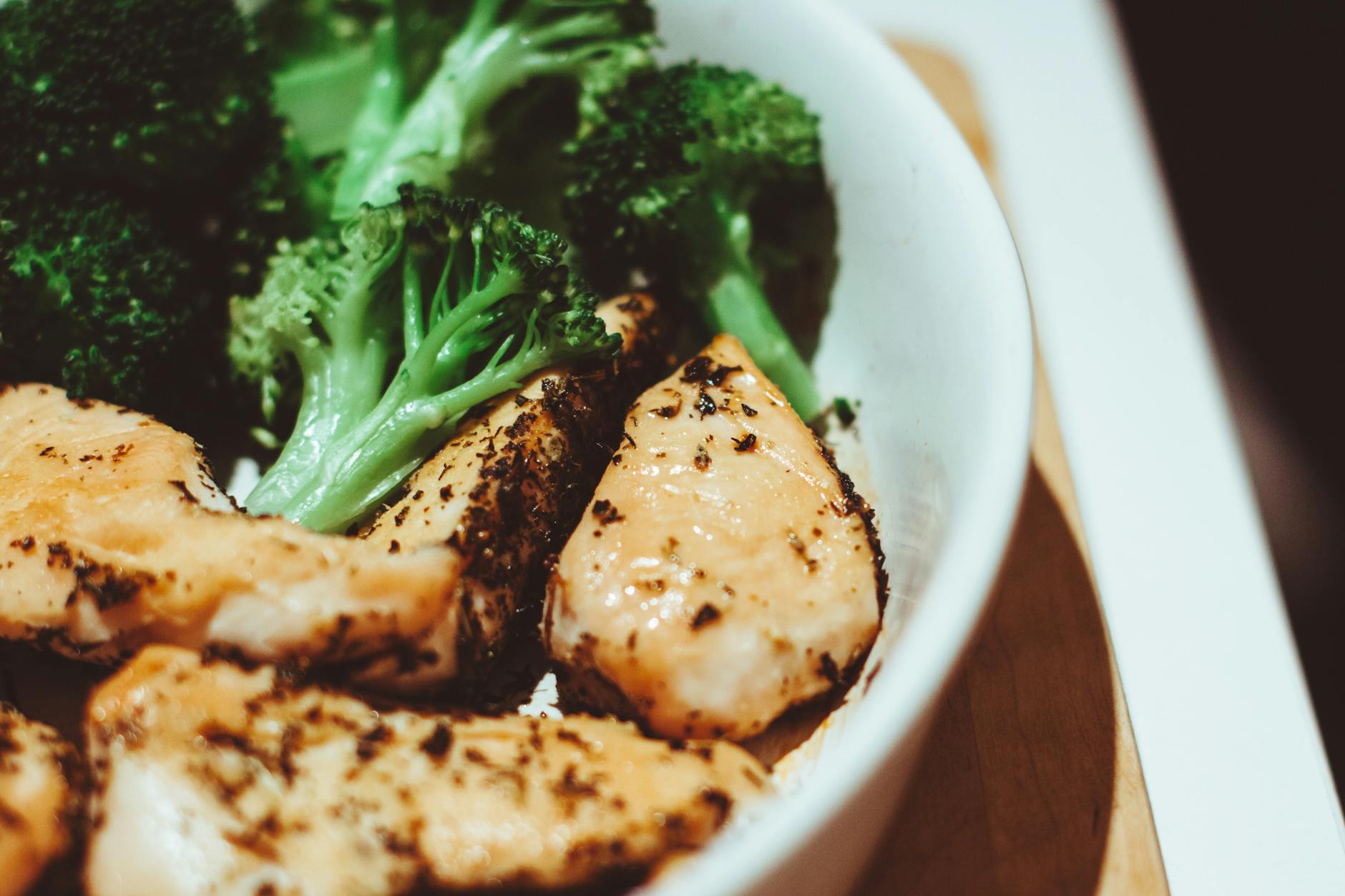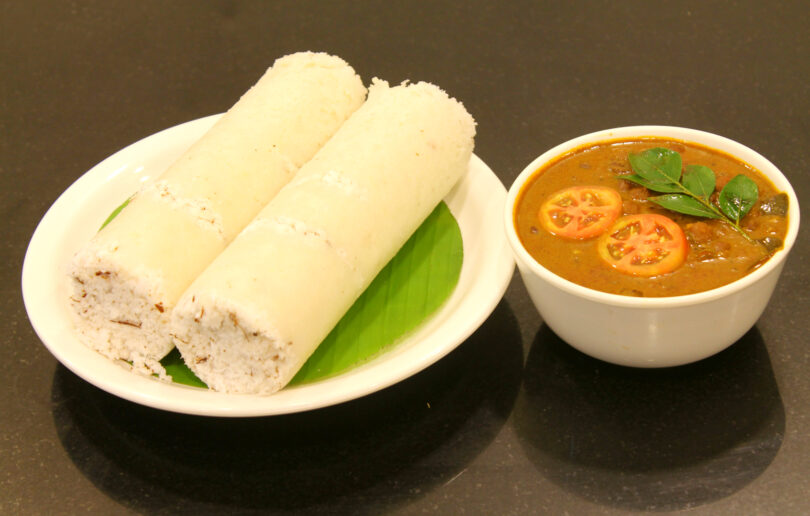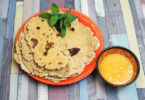#Discover the Origins of Kerala’s Traditional Puttu Discover the Origins of Kerala’s Traditional Puttu
Welcome to a journey through the rich culinary heritage of Kerala, where we delve into the origins and secrets of the beloved traditional breakfast dish known as puttu. Despite recent playful jabs in movies and social media, puttu remains a staple favorite among Malayalees. It is often enjoyed with an array of delectable accompaniments, such as whole moong dal curry, bananas, black channa curry, and crispy pappad. But is there more to puttu than meets the eye?
The Trick of Soft Puttu
Contrary to the misconceptions, when prepared with finesse, puttu is anything but hard. Food vlogger Mrinal Das Venkalat shares his delightful experience of savoring the best puttu at Nairettan’s humble shop in Paravoor. Nairettan takes pride in grinding and roasting the rice himself, resulting in a tantalizing plate of puttu paired with delectable dal, pappad, and egg masala. The secret lies in achieving the perfect consistency of the puttu flour, ensuring it remains dry before gradually adding water. The quality of the flour plays a vital role, influencing the taste and texture of this beloved breakfast delicacy.
The Most Nutritious Breakfast
Not only is puttu a culinary delight, but nutritionists have also crowned it as one of the healthiest breakfast options in Kerala. The combination of carbohydrates from the steamed puttu and proteins from a variety of curries creates a harmonious partnership that fuels the body and mind. Steaming the puttu retains its essential nutrients, making it a valuable source of energy. While there are numerous puttu combinations to explore, nutritionists advise reserving meat curries for lunch or dinner. However, there are several ways to enhance the nutritional value of your puttu, such as adding shredded carrots and coconut during the steaming process or experimenting with alternatives like ragi and wheat puttu.
Join us as we unravel the mysteries of puttu, uncover its historical significance, and celebrate the flavors that have made it an enduring favorite for generations. Step into the world of Kerala’s traditional cuisine and experience the magic of puttu like never before.
Stay tuned for our upcoming blog posts, where we will explore the art of making the perfect puttu and share mouthwatering recipes to elevate your breakfast experience.
The Historical Roots of Puttu
Puttu, a beloved dish of Kerala, holds a deep-rooted history that reflects the cultural heritage and culinary traditions of the region. Let’s explore the ancient origins of puttu and the influence of Arab traders on this delectable delicacy.
Ancient Origins of Puttu
Puttu traces its origins back to ancient times when rice, the primary ingredient of the dish, was cultivated in the fertile lands of Kerala. Rice has always been a staple crop in the region, and its abundance led to the development of various dishes, with puttu being one of the most iconic.
The word “puttu” itself is derived from the Tamil language, where it means “portioned.” This alludes to the unique preparation method of layering the rice mixture and steaming it to perfection. While the exact origins of puttu remain uncertain, its presence can be traced back several centuries, highlighting its time-honored significance in Kerala’s culinary landscape.
Influence of Arab Traders on Puttu
During ancient times, Kerala’s coastline attracted traders from around the world, including Arab merchants who ventured to the Malabar region in search of spices. These traders not only introduced an array of exotic spices but also left an indelible mark on the local cuisine, including puttu.
Arab traders brought with them a method of steaming ground rice known as “muhalla,” which bears striking similarities to the preparation of puttu. The influence of these traders is evident in the usage of ingredients such as coconut and the unique cylindrical shape of puttu, which is reminiscent of the traditional Arab cooking vessel, the “mouldi.”
The amalgamation of local ingredients and Arab culinary techniques resulted in the birth of the popular dish we know today as puttu. It stands as a testament to the rich cultural exchange that occurred through trade and the integrated heritage of Kerala’s gastronomic traditions.
 Broccoli in Bowl (Photo by Pixabay)
Broccoli in Bowl (Photo by Pixabay)
As we delve deeper into the culinary journey of puttu, we uncover not only a delicious dish but also a story of cultural assimilation and the historical exchange of knowledge. The next time you savor a plate of puttu, remember the ancient origins and the influences that have shaped this culinary masterpiece.
Sources:
Discover the Origins of Kerala’s Traditional Puttu
Traditional Ingredients and Preparation
Puttu, the beloved breakfast staple of Malayalees, holds a special place in the hearts and palates of the people of Kerala. Made from rice flour and steamed to perfection, this dish has been enjoyed for generations. In this section, we will delve into the traditional ingredients and the meticulous preparation techniques that make puttu a true culinary delight.
The Importance of Rice Flour
At the heart of every delicious puttu lies the key ingredient: rice flour. Rice, a staple grain in Kerala, is ground into a fine powder to create the base for this iconic dish. The choice of rice variety for making puttu can vary, from the aromatic Kerala Rosematta to the commonly used Ponni or Matta rice. The rice flour used in puttu making should be of high quality, ensuring a smooth and consistent texture in the final product.
The Art of Layering in Puttu Making
One of the unique aspects of puttu preparation is the artful layering of ingredients. Traditionally, a cylindrical puttu maker is used, consisting of alternating layers of rice flour and grated coconut. This layering technique helps create a distinct and flavorful profile, with each bite offering a harmonious blend of textures and tastes. The coconut adds a hint of natural sweetness and enhances the overall richness of the dish.
Steaming Techniques for Perfect Puttu
The steaming process is crucial in achieving the perfect texture and taste of puttu. The cylindrical puttu maker is placed on top of a pot or steamer filled with boiling water. As the steam rises, it gently cooks the layered rice flour and coconut mixture, resulting in soft and fluffy puttu. The duration of steaming plays a vital role in determining the final outcome. Too short a steaming time can lead to a raw taste, while oversteaming can result in a dry and crumbly texture.
To ensure that your puttu turns out just right, it is essential to keep an eye on the steaming process, checking for the right level of moisture and tenderness. The aroma that fills the kitchen as the puttu steams is truly tantalizing, heightening the anticipation for the delightful breakfast that awaits.
Image Placeholder: A steaming pot of puttu with a side of coconut chutney
As you embark on your culinary journey to explore the origins of Kerala’s traditional puttu, remember the importance of high-quality rice flour, the art of layering with grated coconut, and the perfection achieved through the steaming process. Each step is integral to creating a mouthwatering dish that has stood the test of time.
Interested in learning more about the history and cultural significance of puttu? Visit this link to delve deeper into the culinary traditions of Kerala.
Stay tuned for the next section, where we will explore the delectable accompaniments that elevate the flavors of puttu to new heights.
Regional Variations of Puttu
Puttu, a traditional South Indian breakfast dish, has a rich history and is loved by many across the region. While the basic recipe remains the same, there are fascinating regional variations that add unique flavors and ingredients to this beloved dish. Let’s discover some of the popular puttu combinations in Kerala and explore unique puttu recipes from different regions.
Popular Puttu Combinations in Kerala
In Kerala, puttu is often enjoyed with a variety of delicious side dishes and accompaniments. Here are some popular combinations that enhance the taste and experience of enjoying puttu:
- Kadala Curry: Puttu and Kadala Curry is a classic combination that is widely cherished in Kerala. The spicy and flavorful curry made from black chickpeas pairs perfectly with the soft and steamed puttu. It’s a match made in culinary heaven!
- Pazham: Puttu and pazham (banana) is another delightful combination. The sweetness of ripe bananas complements the neutral flavors of puttu, creating a delightful harmony on your taste buds. It’s a simple yet satisfying way to enjoy this traditional dish.
- Pappadam: Crispy and crunchy pappadams are often served alongside puttu to add some texture and a burst of flavors. The combination of soft puttu and crispy pappadams creates an interesting contrast that elevates the overall dining experience.
Unique Puttu Recipes from Different Regions
Different regions in Kerala have their unique spin on puttu, incorporating local ingredients and flavors. Here are a few examples of unique puttu recipes from various regions:
- Kuttanadan Puttu: Hailing from the beautiful region of Kuttanad, this version of puttu is made using red rice flour instead of the traditional rice flour. The use of red rice gives it a distinct color and a slightly nutty flavor, making it a delightful variation.
- Chiratta Puttu: Chiratta Puttu is a specialty of the Malabar region in Kerala. It is prepared by steaming puttu in a cylindrical shape using coconut shells as molds. The use of coconut shells infuses a subtle coconut aroma into the puttu, adding a unique touch to its taste.
- Ragi Puttu: Ragi, also known as finger millet, is a nutritious cereal widely consumed in Kerala. Ragi puttu is a healthy twist to the traditional recipe, where ragi flour is used instead of rice flour. It is rich in fiber and offers a slightly earthy and nutty flavor to the puttu.
These regional variations and unique recipes showcase the culinary diversity of Kerala’s traditional puttu. Each one offers a distinct taste and experience, allowing you to explore the different flavors that this beloved dish has to offer.
 Blue and White Sky With Stars (Photo by Rafael Cerqueira)
Blue and White Sky With Stars (Photo by Rafael Cerqueira)
Remember to explore these combinations and recipes to truly appreciate the versatility of puttu and immerse yourself in the authentic flavors of Kerala.
Stay tuned for more exciting insights into the origins and variations of this delightful dish in our upcoming sections.
Nutritional Benefits of Puttu
Puttu, a popular traditional dish from Kerala, not only tantalizes taste buds with its unique flavor but also offers a plethora of nutritional benefits. Packed with carbohydrates, proteins, and other essential nutrients, Puttu makes for a wholesome and satisfying meal. In this section, we will explore the nutritional aspects of Puttu and investigate its suitability for different dietary needs.
Carbohydrates and Proteins in Puttu
Puttu primarily derives its energy from carbohydrates, which are an essential macronutrient responsible for fueling our bodies. The steamed rice flour used in making Puttu is naturally rich in carbohydrates, providing sustenance and energy. Along with carbohydrates, Puttu also contains a moderate amount of proteins, which are vital for repairing and building tissues in our body. The combination of carbohydrates and proteins in Puttu ensures a well-rounded meal that keeps you feeling full and nourished.
Healthier Alternatives to Traditional Puttu
While traditional Puttu is undeniably delicious, those looking for healthier alternatives can explore options that offer additional nutritional benefits. One popular choice is incorporating whole grains like ragi (finger millet) or oats into the Puttu mixture. These whole grains add fiber, vitamins, and minerals to the dish, making it even more nutritious. Additionally, using puttu makers made of bamboo or metal instead of the traditional coconut shell ensures a healthier cooking process by minimizing the absorption of oil.
Puttu for Diabetic Patients
Contrary to common belief, individuals with diabetes can include Puttu in their diet with certain modifications. Opting for Puttu made with whole grain flours, such as ragi or wheat, instead of white rice flour can help regulate blood sugar levels and provide a slower release of carbohydrates. Adding high-fiber and low-glycemic-index ingredients like grated coconut and nuts can further improve the glycemic control of the dish. However, it is essential to consume Puttu in moderation and in consultation with a healthcare professional.
 Boiled potatoes near traditional Russian salad (Photo by Karolina Grabowska)
Boiled potatoes near traditional Russian salad (Photo by Karolina Grabowska)
Remember, when considering any dietary modifications, it’s important to consult a nutritionist or healthcare professional to ensure it aligns with your specific health needs and goals.
Puttu’s nutritional benefits make it an excellent choice for those seeking a wholesome and nourishing meal. Whether you enjoy the traditional version or explore healthier alternatives, Puttu can be a delightful addition to your culinary repertoire.
Are you intrigued by the nutritional benefits of Puttu? Wondering how to make it even more delicious? Explore our next section to discover mouthwatering Puttu recipes that will tantalize your taste buds.






